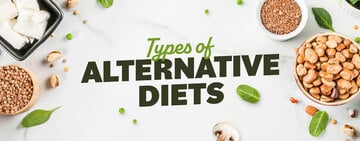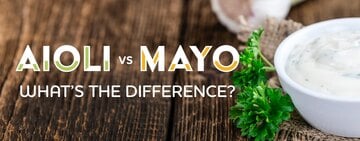Probiotics in Fermented Foods
We all know that some foods are more nutritious than others, but did you know that foods can be good for your body because of the live organisms they contain? These organisms are called probiotics, and they are commonly found in fermented foods.
Foods with probiotics are increasing in popularity because of their benefits to your body's digestion processes. Incorporating these foods in your dishes could help your establishment stand out to health-conscious patrons. To learn more about probiotics and their relationship with fermented foods and to see our probiotic-rich menu suggestions, keep reading.
What Are Probiotics?

Probiotics are living microorganisms that are consumed for their benefits to the human body. They are considered “good” bacteria that can aid with digestion or help to replace organisms that are lost after you take antibiotics.
Not all microorganisms that are found in foods are probiotic. For example, yeast helps baked goods rise and plays a key role in fermenting beverages like beer and wine, but most strains of yeast are not probiotic.
Do Fermented Foods Contain Probiotics?
Yes, some fermented foods contain probiotics, but not all foods that undergo the fermentation process have these “good” live organisms. Many fermented products have their live organisms removed before consumption. Plus, it’s important to remember that not all organisms that cause fermentation have probiotic qualities. So, while probiotics are found in a lot of fermented foods, not all fermented foods contain probiotics.
Does Heat Kill Probiotics?
Some fermented foods lose their probiotic organisms as a result of heat treatment. Canned sauerkraut and canned kimchi, two foods that contain probiotics when not canned, are put under heat as part of the canning process. Often, this heat deactivates the probiotics found in these foods.
Cooking foods with probiotics can do the same, though some experts argue that even deactivated probiotics can have positive effects on the human body. If you want to give your customers the full benefits of these kinds of good bacteria, it’s best to serve probiotic-full foods at room temperature or cooler, but not frozen.
Examples of Probiotic Fermented Foods and Drinks
To add the advantages of probiotics and their benefits, try incorporating some of these good fermented drinks and foods to your menu.
1. Kombucha
Kombucha is a fermented drink made with tea and live cultures. It can be made in a variety of flavors and strengths. Because of its benefits to gut health, kombucha is an appealing addition to any restaurant beverage menu and can even work well as a boozy drink on bar menus.

2. Kimchi
This Korean side dish is made of spicy pickled cabbage that can give your menu items a kick of heat and flavor. Mix it with fried rice or put it on top of potato pancakes to create side dishes with a big taste.
3. Sauerkraut
Sauerkraut is the German take on fermented cabbage. Serve it with sausages like knockwurst, classic hot dogs, or on signature Reuben sandwiches to bring probiotics to some meat-centered dishes.
4. Tempeh
Originally from Indonesia, tempeh is made from soybeans that are fermented and formed into a cake. You can combine it with cheese to make a sandwich, or try marinating cubes of tempeh to top a salad.
5. Miso
Made from fermented soybeans, miso is a paste that is often used in Japanese cooking. Make classic miso soup, use this savory paste to glaze vegetables, or try mixing it with rice vinegar and sesame oil to make a salad dressing.
6. Kefir
Kefir is a fermented milk with the consistency of a thin yogurt that is packed with friendly bacteria and yeast. It is made when kefir grains are added to cow's or goat's milk. The final product can be added to smoothies, cereal, salad dressings, and more!
7. Yogurt
Not all yogurts contain probiotics, but probiotic yogurt is a versatile ingredient that you can use throughout your menu. Try mixing it with fruit and ice to make refreshing smoothies, or blend it with herbs to add a cooling sauce to your dish.
8. Pickles
A popular topping in any burger joint, pickles are actually a great source of probiotic bacteria. They are made by leaving cucumbers in pickling solution over time to ferment and produce their signature sour flavor. Grab a variety of pickles to boost the flavor profile of your restaurant's sandwiches!
Researchers are continually learning more about the benefits of probiotics, and these "good" bacteria are already popular additions to many modern diets. Bringing fermented ingredients with probiotics to your menu could capture the attention of health-conscious customers and add new flavors to your menu. If you want to start small, try pickling your own vegetables or serving probiotic yogurt at breakfast. Soon, you can add a variety of foods with probiotics to your offerings.



